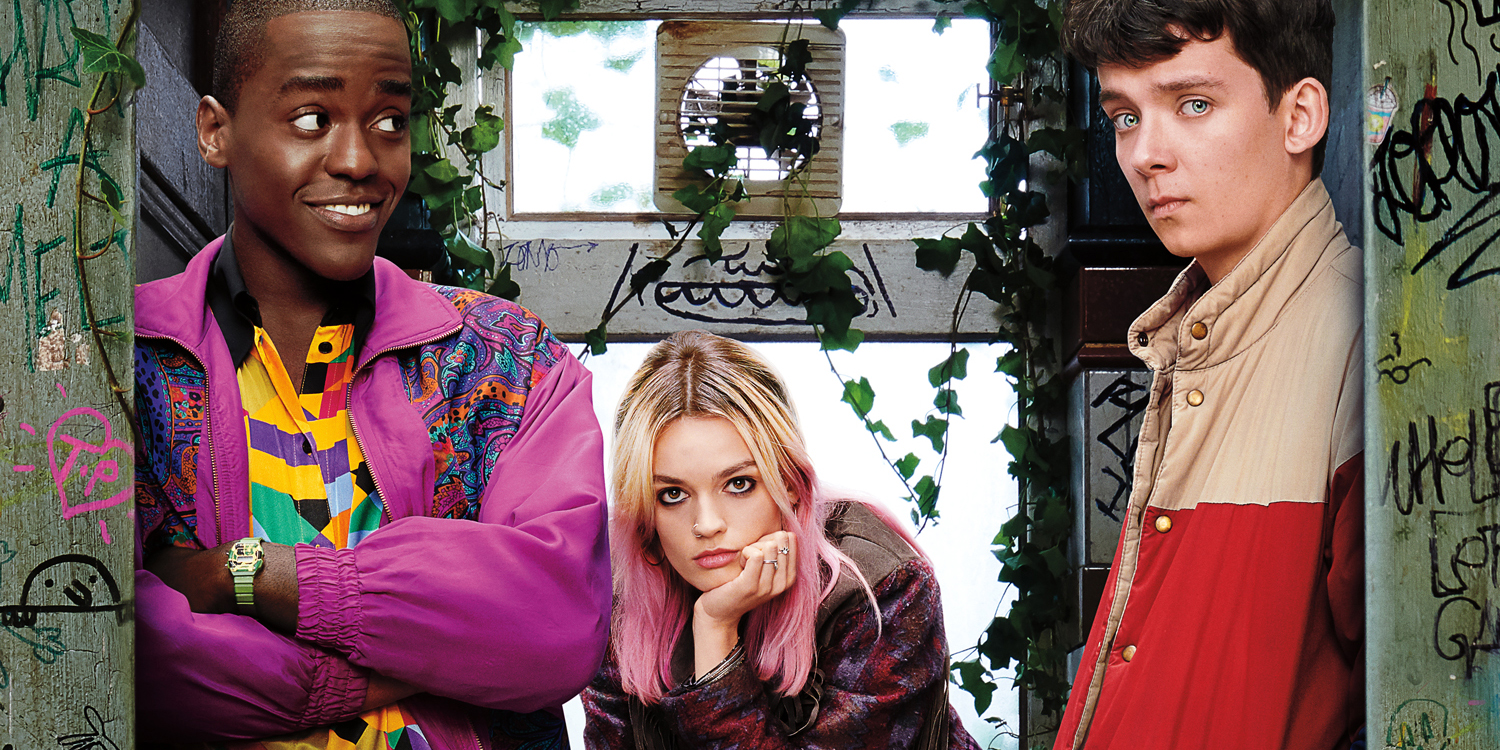Film and television’s approach to sex has always been paradoxical. While the industry has been obsessed with the subject, it rarely gets it right. From Heisse’s The Kiss to Bergman’s Persona to Damiano’s Deep Throat, explorations of sex have been convoluted at best – even if those experiments have given us cinematic gems. But if depicting intimacy on screen has already been complicated, talking about teen and queer sex in the 21st century seemed impossible. Until Netflix’s Sex Education came along.
Everything that series like Queer As Folk or The L Word failed to achieve for our generation, Laurie Nunn’s series masterfully accomplished in a production that, at first glance, appears to be just another teen comedy-drama.
When the Title Says It All

I confess that the first thing that caught my attention about Sex Education was the title. Well, that and Gillian Anderson, of course.
Being part of a generation that had the worst education about sex and reproduction, I find a series that promises to talk about sex in that way worth an immediate click. But Sex Education isn’t clickbait – it only takes two episodes to enter a universe of characters with which this daughter of a psychotherapist feels seen and named.
Sex Education then demystifies adolescent – and adult – sex, making masturbation, exploration, and intercourse something more than the pornographic playground by and for men that we often see in film and TV.
Sex Education and the Spectrum of Identity

From Eric’s (Ncuti Gatwa) charming flamboyance to Adam’s (Connor Swindells) unexpected – but logical – bisexuality, Sex Education encompasses nearly every facet of identity and preference.
And what seems like a teen series is, for many like me, a tool for educating our loved ones. Especially those who still have in mind aesthetic and visual canons of eroticism worthy of early 20th-century pocket postcards.
Without going too far back, my generation had a toxic sex education inspired by American Pie. Compared to that, Sex Education is a philosophical and moral treatise on the proper role of sexuality in the psycho-evolutionary development of a teenager – or a 35-year-old woman.
The series narrates in 32 episodes the different approaches to sex in the most delicate moment of a person’s personal journey. The best thing about it is that Ariadne’s thread, instead of guiding Thesus through a labyrinth, begins with a socially awkward character, his best friend, and a social reject. It’s like The Breakfast Club but about sex in the 21st century.
The detention room is now a sex clinic, and every possible scenario seems to unfold in a fantastically curated pastel-colored narrative.
Some may argue that new cinematic languages – whether for the big or small screen – capitalize on diversity and gender identity. While that may be true, I think it’s worth it when the result is a rich and important series like this Sex Education, which touches on issues such as asexuality, performative fears, fetishism, and the importance of communication and safe sex.
Normalizing Diversity Through Visual Languages

The structure of the narrative codes in Sex Education would make Roland Barthes very happy. For the French literary theorist and semiotician, a well-structured story had to conjugate a series of codes – enigma, actions, symbolic, semic, and cultural – that would make the experience in front of the image (static or moving) a successful communication.
Although Barthes did not like television, he would agree that the character arcs in this series envelop us, make us part of it, while at the same time being aware that we exist outside of it.
We are that Otis (Asa Butterfield), who learns from his mother that the way to get affection is through solving other people’s problems. We’re that frantic Lily (Tanya Reynolds) whose outlook on life – and pleasure – seems unfit for regular people. We are even that Aimee (Aimee Lou Wood), whom abuse and trauma seem to paralyze at a bus stop.
But at the same time, we know we are that bystander who needs so much reassurance and, well, education, to approach life and sexual awakening from entitlement, respect, and comfort.
The Importance of Happy Endings

Yes, I’m a sucker for happy endings. However, Sex Education takes them a step further. While other series leave charming character stories dangling, this series brings almost all its characters to safe harbor with coherent denouements and naive but oh-so-necessary morals.
From the impossibility of going from masturbation to love-filled intercourse, from frustrated life in a trailer park to a once-in-a-lifetime opportunity, from abuse to the sublimation of trauma through art, Sex Education has it all.
What’s more, it has a script that dismantles the canonical insensitivity of English productions and makes us laugh out loud and cry in spurts. All while telling underrepresented stories that have no place in the streaming industry – or didn’t until now.
Simply put, Sex Education is a manifesto to diversity, true love, and safe sex. It is, without a doubt, a production that pays homage to its title.

